<Report from overseas office> [Vietnam: World Residence Tour] Do different housing types in different cities require different types of washing machines?
- Release date: Jul 26, 2021
- 7749 Views
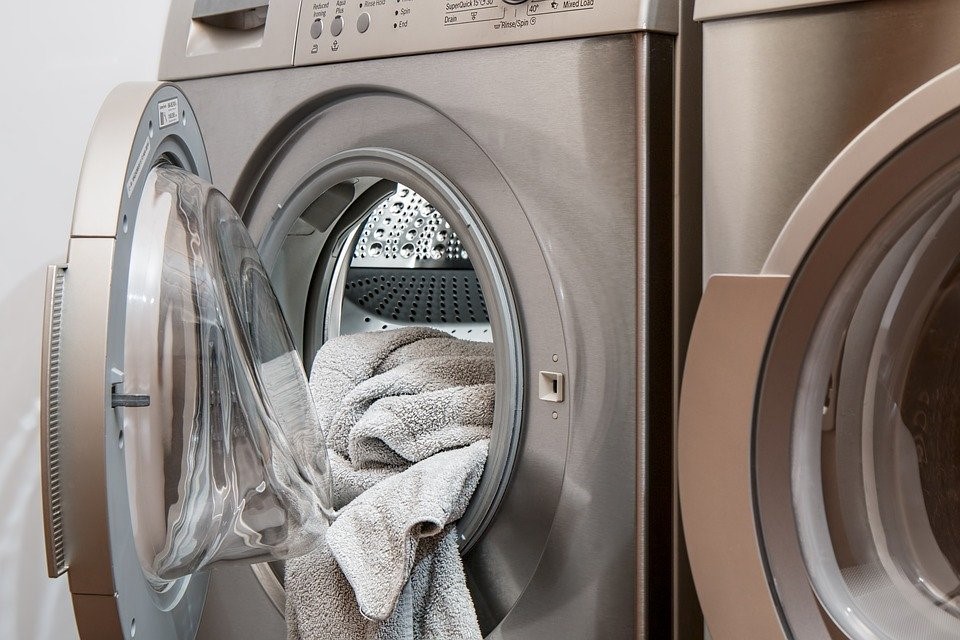
第1回:【ベトナム:地球の暮らし方】住宅環境から見えるベトナム人の意識・価値観
第2回:<駐在員コラム>【ベトナム:地球の暮らし方】都市により住居タイプが異なることで、洗濯機タイプも違う?
第3回:<駐在員コラム>【ベトナム:地球の暮らし方】意外にも寒さが厳しい北部、バスルームにも南北の違いが
第4回:<駐在員コラム>【ベトナム:地球の暮らし方】ベトナムのキッチン事情~南北の気温差でキッチンの作りが違う?~
第5回:【ベトナム:地球の暮らし方】 日本の味覚がベトナムで通用するか
第6回:【ベトナム:地球の暮らし方】Ajimiでの試食活動から覗くベトナムの味覚特徴
第7回:【中国・ベトナム:地球の暮らし方】おいしい酸味の秘訣とは
第8回: 【ベトナム:地球の暮らし方】Ajimiから見る味噌のポテンシャル
第9回:【ベトナム:地球の暮らし方】味覚に関する固定観念を変える試食活動
第10回:【ベトナム:地球の暮らし方】 ベトナム人の水質へのこだわり
第11回:【ベトナム:地球の暮らし方】 ベトナムのトイレにある「手動式ウォシュレット」
第12回:【ベトナム:地球の暮らし方】南国の暑さ対策に必要なものは何か
第13回:【ベトナム:地球の暮らし方】マルチ機能が当たり前の部屋づくり
第14回:【ベトナム:地球の暮らし方】EV化が進む東南アジア
According to the Vietnam Census (2019), Ho Chi Minh City has 71.9% of the population owning a washing machine. Hanoi has 80.5% of the same. For Vietnam as a whole, the rate is 52.2%. In the most recent Intage Vietnam’s independent survey in 2019, the washing machine ownership rate is almost 100% in both cities, although the total ownership rate of washing machines in Ho Chi Minh City and Hanoi was around 80% as of 2015.
What is noteworthy about this washing machine is its "exterior design". Without taking into account the slanted drum and twin-tub models, the so-called vertical "top loading type" and the "front loading type" with the loading and unloading ports in the front were surveyed, and the differences between Hanoi and Ho Chi Minh City were significant.
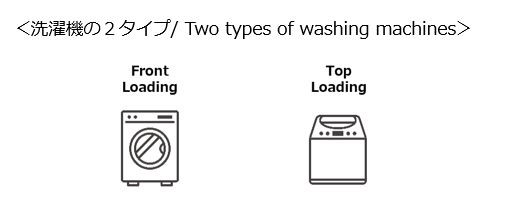
Differences between Hanoi and Ho Chi Minh City
Perhaps because of the overall trend of emphasizing design, the front loading type (86.6% in Ho Chi Minh City and 65.6% in Hanoi) is popular in the both cities. However, a look at the detailed data shows that in Hanoi, the ratio of front loading type (65.6%) to top loading type (30.5%), while in Ho Chi Minh City, there are far more people who prefer front loading type (86.6%) than top loading type (11.4%) (Source: 2019 Intage Vietnam’s Independent Survey). This difference is also related to the form of residence and the location of the washing machine. In Hanoi, many dwellings are vertically long, and in Hanoi, washing machines are often placed on rooftops or balconies. In Ho Chi Minh City, there are many low-rise dwellings, and washing machines and places to dry clothes are often inside the house. In Hanoi, where disasters are more common, roofs are made stronger so that rooftop space can be utilized, but in Ho Chi Minh City, where disasters are less common, there are still many houses with tin roofs, which limits the space for laundry.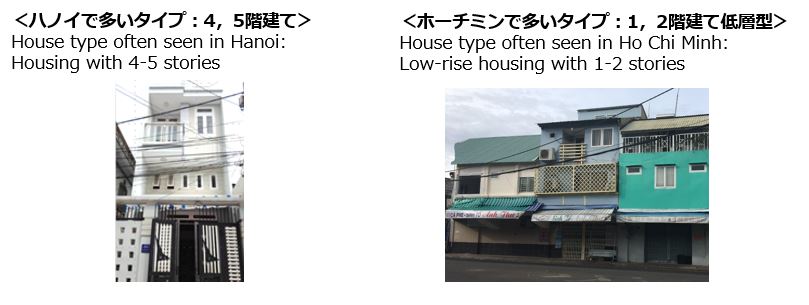
Differences between the wealthy class and the middle class
For the affluent, washing machines are usually located in the laundry area, while for the middle class, washing machines are usually located in the rooftop balcony area in Hanoi and in the same area as the kitchen area in Ho Chi Minh City.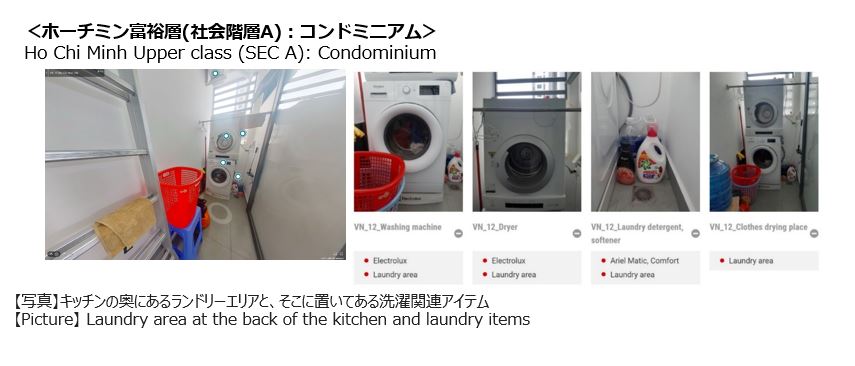
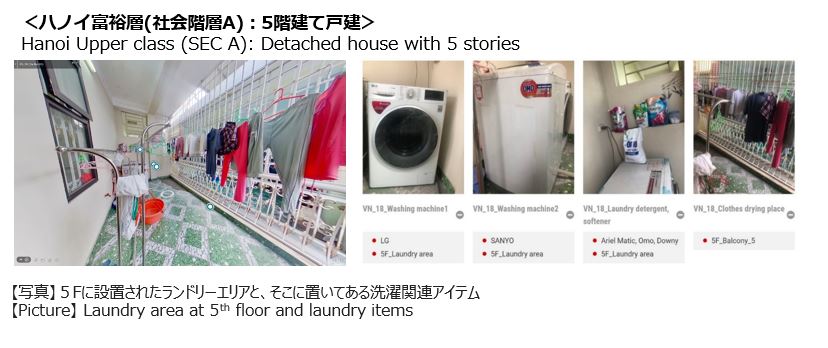
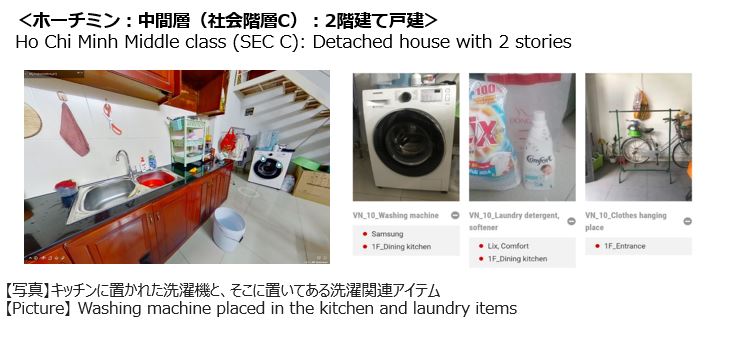
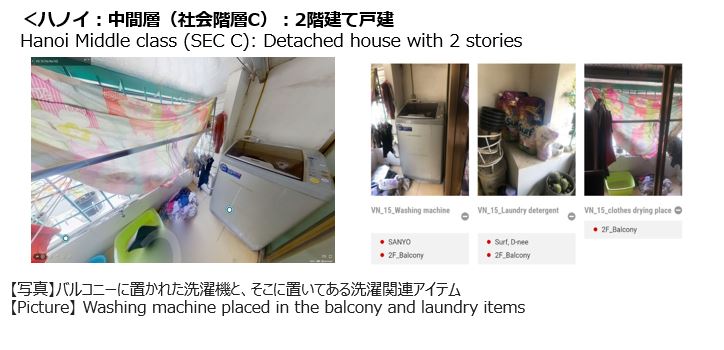
Vietnam is a country with an abundance of water, and water rates are relatively low, so people are more conscious of saving energy than saving water. Especially in the northern part of the country, there are many days when it is very humid and difficult for laundry to dry, which makes it easy for germs to grow and for laundry to smell bad. It is expected that functions such as the ability to select boiling water and washing and drying will be required.
Thus, properly observing the behavioral patterns of consumers will enable to develop products and services that differentiate you from your competitors.
Introduction to Consumer Life Panorama
Consumer Life Panorama is Intage's web-based database of real consumer lifestyles in Japan and overseas. You can view 360-degree images of the living environments of consumers in various countries, and see their daily flow of life, traffic lines, and digital lives.Some of the photos in this article are also taken from the database. This service can be used for those who want to observe the living environment of overseas consumers at hand without the need for customized surveys.
To view the Consumer Life Panorama demo site here
For an overview of Consumer Life Panorama here
-
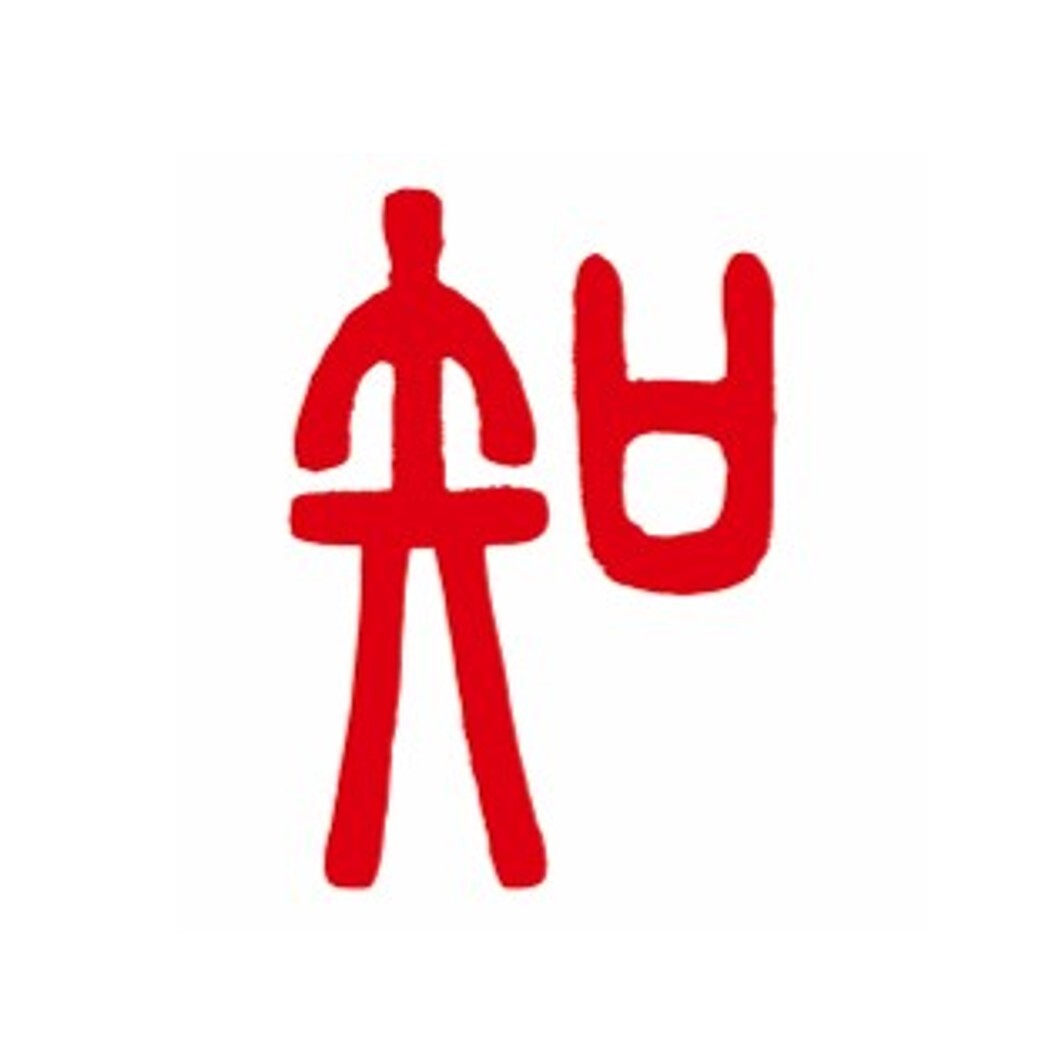
Author profile
(Mr.) Masami Negishi
Managing Director of INTAGE VN. After taking charge of overseas research at INTAGE Japan, I was engaged in supporting INTAGE INDIA. After that, I was transferred to INTAGE VN, where I have been since November 2015. I have given many lectures and conference papers, and hold an MBA. For more information on the report, search "VIEVIEW" on slideShare, a web service. For more columns by Vietnamese expatriates here)[https://intage.com.vn/vieview/]. For online business card (here.
-

Editor profile
(Ms.) Risa Takahama
Responsible for the creation and operation of the Global Market Surfer website.
 Global Market Surfer
Global Market Surfer CLP
CLP